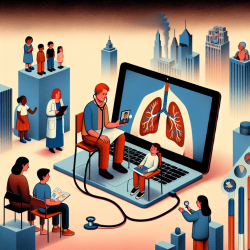In the evolving landscape of speech-language pathology, the integration of comprehensive models like the International Classification of Functioning, Disability, and Health (ICIDH-2) offers a promising path toward enhancing clinical practice and research. As we delve into the theoretical and clinical implications of ICIDH-2 for speech-language pathology, it becomes evident that this framework not only enriches our understanding of client needs but also opens new avenues for the application of online therapy and telehealth solutions.
The ICIDH-2 framework emphasizes a holistic view of health, recognizing the interplay between body functions, individual activities, and societal participation. For speech-language pathologists (SLPs), this means moving beyond the traditional focus on impairment alone to consider how communication disorders impact a person's daily life and social interactions. By adopting this broader perspective, SLPs can develop more targeted and effective intervention strategies that address the full spectrum of challenges faced by individuals with communication disorders.
One of the key benefits of the ICIDH-2 model is its potential to improve the skills of practitioners. By encouraging SLPs to consider the wide-ranging effects of communication disorders, the model fosters a deeper understanding of the complexities involved in each case. This comprehensive approach not only enhances clinical assessment and intervention planning but also equips SLPs with the insights needed to tailor their services to the unique needs of each client. Furthermore, the ICIDH-2 model's emphasis on participation and societal involvement aligns well with the goals of client-centered care, advocating for interventions that enable individuals to lead more fulfilling lives.
In addition to its implications for clinical practice, the ICIDH-2 model offers a robust framework for research in speech-language pathology. By providing a standardized language for describing the consequences of communication disorders, the model facilitates the comparison of data across studies and settings. This standardization is crucial for building a strong evidence base that can guide clinical decision-making and policy development. Moreover, the model's comprehensive nature encourages researchers to explore the multifaceted impacts of communication disorders, from the physiological to the psychosocial, thereby enriching our understanding of these complex conditions.
The advent of online therapy and telehealth presents an exciting opportunity to apply the ICIDH-2 model in new and innovative ways. Telehealth services, by their very nature, are well-suited to addressing the participation and societal aspects of the ICIDH-2 framework. Through online platforms, SLPs can offer more accessible and flexible services, helping clients to overcome barriers to communication in their everyday environments. For example, teletherapy sessions can be conducted in settings that are relevant to the client's daily activities, allowing for real-time feedback and practice in naturalistic contexts. Additionally, online therapy provides a platform for SLPs to collaborate with clients' families and educators, further supporting the goal of enhancing participation and inclusion.
As we continue to explore the implications of the ICIDH-2 model for speech-language pathology, it is clear that this framework offers a valuable lens through which to view and address communication disorders. By embracing the comprehensive perspective provided by ICIDH-2, SLPs can enhance their clinical practice, contribute to meaningful research, and leverage the benefits of online therapy and telehealth to improve the lives of individuals with communication disorders.
To read the original research paper, please follow this link: The ICIDH-2: Theoretical and Clinical Implications for Speech-Language Pathology.










